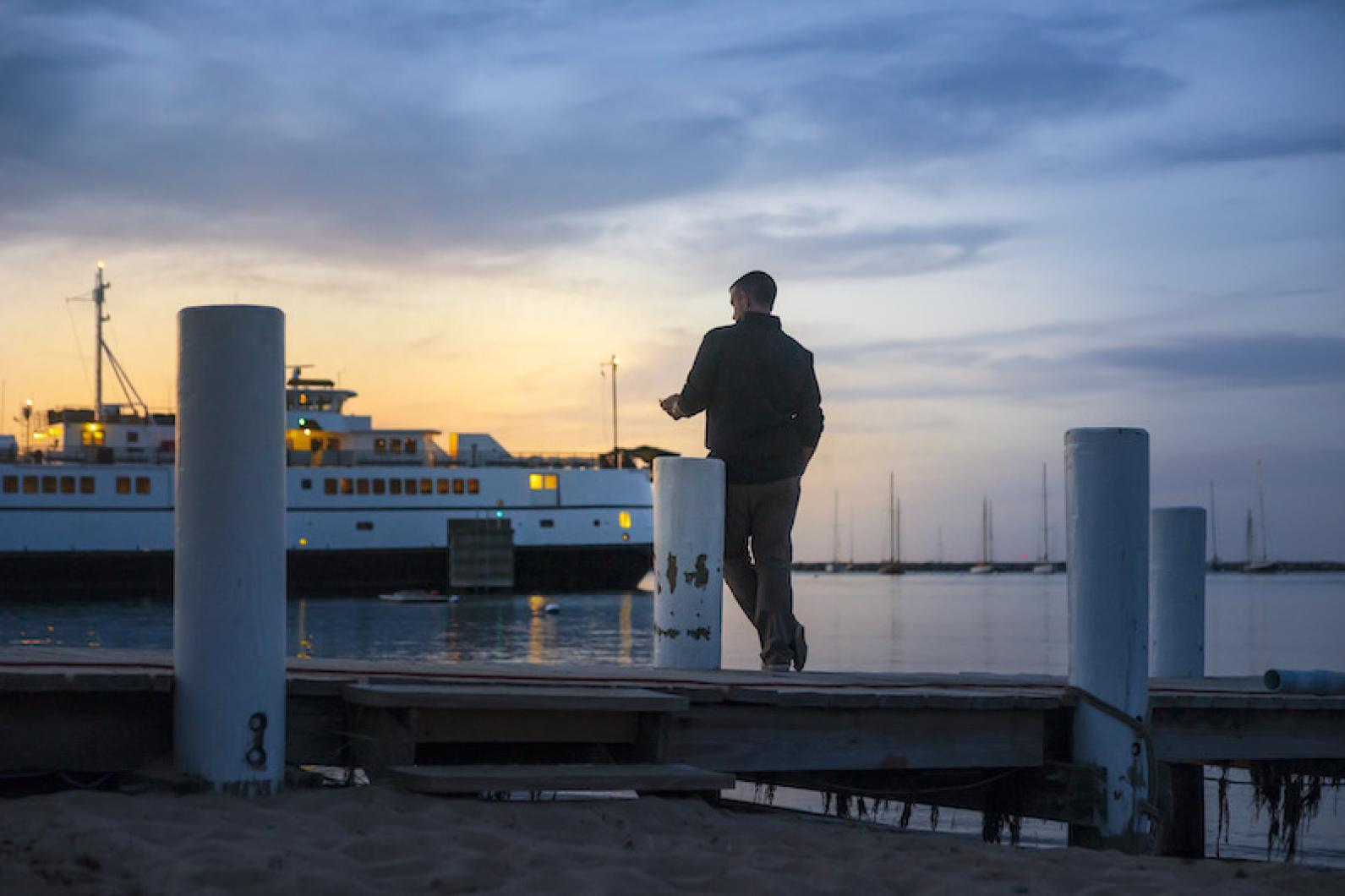Electric-powered Steamship Authority ferries are a long and very costly way off, according to a marine design and engineering firm engaged by the boat line to study the feasibility of going electric.
At a meeting of the boat line governors Thursday afternoon, consultants from Seattle-based Elliott Bay Design Group joined the SSA board of governors online to present the results of their in-depth research into how the boat line might electrify its fleet.
Only by going all-electric could the Steamship Authority realize significant energy savings, Elliott Bay engineer Lydia Benger told the board.
The company presented three options for hybrid propulsion systems, with electric batteries joining diesel generators, but none would save more than an estimated 7 to 10 per cent in energy costs, Ms. Benger said.
The capital cost of building a fully electrified vessel is north of $12 million, according to the Elliott Bay study, while the shoreside charging stations needed to power up electric ferries on either side of the sound have a price tag of their own — both in dollars and in changes to the waterfront.
“Think of . . . an electrical substation,” shoreside power specialist Andy Bennett told the board, describing the visual impact of the installation, which he said would be about the size of two large shipping containers each in Vineyard Haven and Woods Hole, with buried conduits connecting to the power grid.
“You need to think about that. That terminal’s going to be not what it is,” Mr. Bennett said. “[Charging equipment] will displace some things, but it appears at first flush to be manageable,” he continued. “The bad news is it’s expensive. The size batteries you need is millions of dollars.”
Electrification plans are underway in the Washington state ferry system, Mr. Bennett said, but the fleet there remains 100 per cent diesel at present.
“These things take time,” he said.
The Elliott Bay report was commissioned as part of the boat line’s regular useful-life reviews of its vessels, which have taken place in 2012 and 2018 and are ongoing in 2022, general manager Robert Davis said.
The full report is posted online as part of the agenda packet for the May 26 meeting (found by navigating from About to Meeting Notices on the SSA website).
Among other business Thursday, the board granted permission for Cape & Islands Transport Company to add a third vessel, named MV Water Taxi, to its Falmouth-Edgartown route.
The company already is licensed by the SSA to carry passengers aboard either the Pied Piper, its largest vessel, or its slightly smaller Sandpiper.
The water taxi, purchased last year when the company was eyeing a down-Island route, is licensed to carry 40 passengers and two crew, fewer than half the capacity of the Pied Piper, Mr. Davis said.
The company is not requesting any other changes to its license agreement, which limits it to only one vessel in service per trip, Mr. Davis said.
SSA general counsel Terrence Kenneally said that adding the smaller boat will allow the company to run the more fuel-efficient vessel when passenger demand is lower.
“This is really just an operational flexibility they’re asking for,” he said.
Governors also heard an upbeat report from treasurer/comptroller Mark Rozum, who said passenger traffic in April was up more than nine per cent over 2021.
“We’re getting close to pre-pandemic levels,” Mr. Rozum said.
Director of marine operations Mark Amundsen gave an overview of the freight ferry Governor’s recent breakdown, explaining that a scheduled replacement of fuel injectors caused a disruption in engine timing that stalled the boat.
After a software update, the boat line took an extra day to make sure everything was running correctly before returning the vessel to service, Mr. Amundsen said.
While her hull is 68 years old, he said, the Governor still has plenty of useful life left in her following a complete replacement of her propulsion system in 2011.
“Also, the auxiliary power generation has been totally renewed in that vessel,” Mr. Amundsen said.






Comments (11)
Comments
Comment policy »